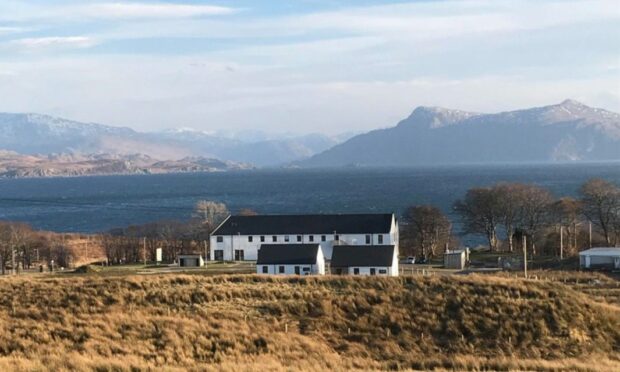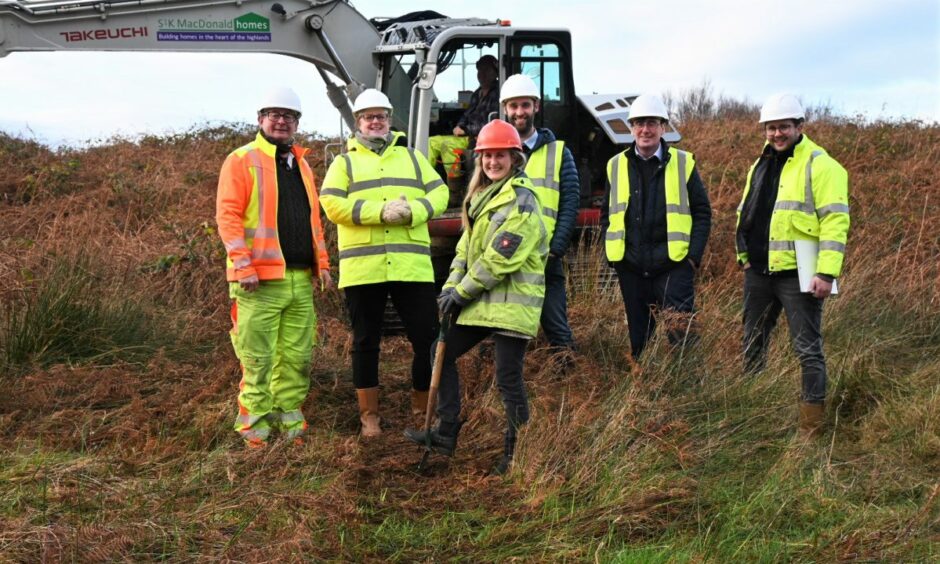Work starts this week on the first new village on Skye in more than 100 years and seen as a model for future housing developments in Scotland.
The pioneering project is part of the wider Kilbeg Village development in Sleat. It aims to bring social, cultural and economic support to the community.
The affordable homes will be available to anyone who needs to live or work in the area. However, they are expected to attract Gaelic speakers.
Sabhal Mòr Ostaig, the National Centre for Gaelic Language and Culture, is based in Sleat. It is a partner in the project with Highland Council and the Communities Housing Trust (CHT).
How many houses are there?
The community-led scheme includes 17 affordable homes. There are six for social rent with the council and eight affordable homes. There are also three discounted self-build plots with the CHT.
The homes will be a mix of discounted rent and sale properties, including family homes and wheelchair accessible houses.
It follows CHT’s two affordable rent-to-buy homes in Kilbeg, now occupied by young families.
An adjacent private development is due to follow shortly, providing a further 14 flats.
Over time, around 100 homes are expected to be built, addressing housing needs for all ages. It is hoped they will support inter-generational living, cultural community spirit and alleviate social isolation.
Sabhal Mòr Ostaig chairman, Angus Macleod said: “Sabhal Mòr Ostaig is proud to be spearheading the ambitious Kilbeg project that helps address the chronic need for housing and aligns with our core aims to support the Gaelic language, culture and local economy.
“This is a great opportunity for those with an affinity to the language and culture to apply to live in accessible, affordable housing in the new Kilbeg community next to Sabhal Mòr Ostaig’s vibrant campus, where language and culture is shared across generations.”
Las month writer and historian professor Jim Hunter called for Sabhal Mòr Ostaig to become Scotland’s first Gaelic university.
Highland Council’s economy and infrastructure committee chairman Ken Gowans said creating a new village is “pioneering, ambitious and pivotal” to the future plan for Skye and Raasay.
“The Kilbeg development has community, heritage and culture at its forefront and this innovative approach to intergenerational community living could well be a catalyst for other areas across Highland.”
Housing project is ‘unique in Scotland’
Ronnie MacRae, CEO of the CHT, said the development is unique in Scotland. He said it provides a model for a mix of people while considering the importance of culture and heritage.
“Repopulating and regenerating the area in this way makes sense, and helps to ensure long-term future sustainability of the community.”
The development is funded by the council, Scottish Government’s Rural and Islands Housing Fund, the European Regional Development Fund, Highlands and Islands Enterprise, Highlands and Islands Partnership Programme, Scottish Funding Council and the Sabhal Mòr Ostaig Development Trust.
Cabinet secretary for education and skills Shirley-Anne Somerville said the project will help ensure Gaelic continues to thrive in the community.
“The Scottish Government recognises the important role that Gaelic has in Scotland’s culture and economy.
“I look forward to seeing this development grow and the positive impact it will have on local communities in Skye.”
Housing secretary Shona Robison said the high quality, affordable homes will allow people to live independently and remain in their community.
Affordable homes for Arisaig
Meanwhile, work has begun on a community-led development of ten affordable homes in Arisaig.
The project, led by Arisaig Community Trust with support from the CHT, will include six community-owned homes for affordable rent.
There will also be four self-build plots, managed by the housing trust.
All the plots will be discounted with the Rural Housing Burden. It assures affordability in perpetuity for the local community.
All the homes will prioritise people with a need to live or work locally.
A 2018 survey among the 300-strong population showed a strong need for housing current residents and incoming workers with key skills.
The trust bought the two-acre site in 2021 with funding from the Scottish Land Fund.
Further funding for the development has been given through the Scottish Government’s Rural and Islands Housing Fund, the Rural Communities Fund, the Quaker Housing Trust, and Highland Council.
Pamela King, the community trust’s project officer, said: “Affordable homes are needed more than ever and it is very exciting to think about the individuals and families who will benefit from this project when they are complete.”
Are you interested in more exclusive and breaking Highland and Islands news from the P&J? If so, why not join our dedicated Facebook page HERE



